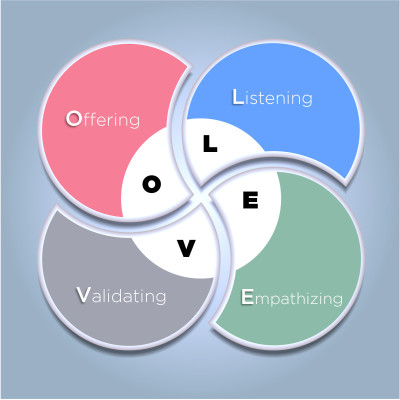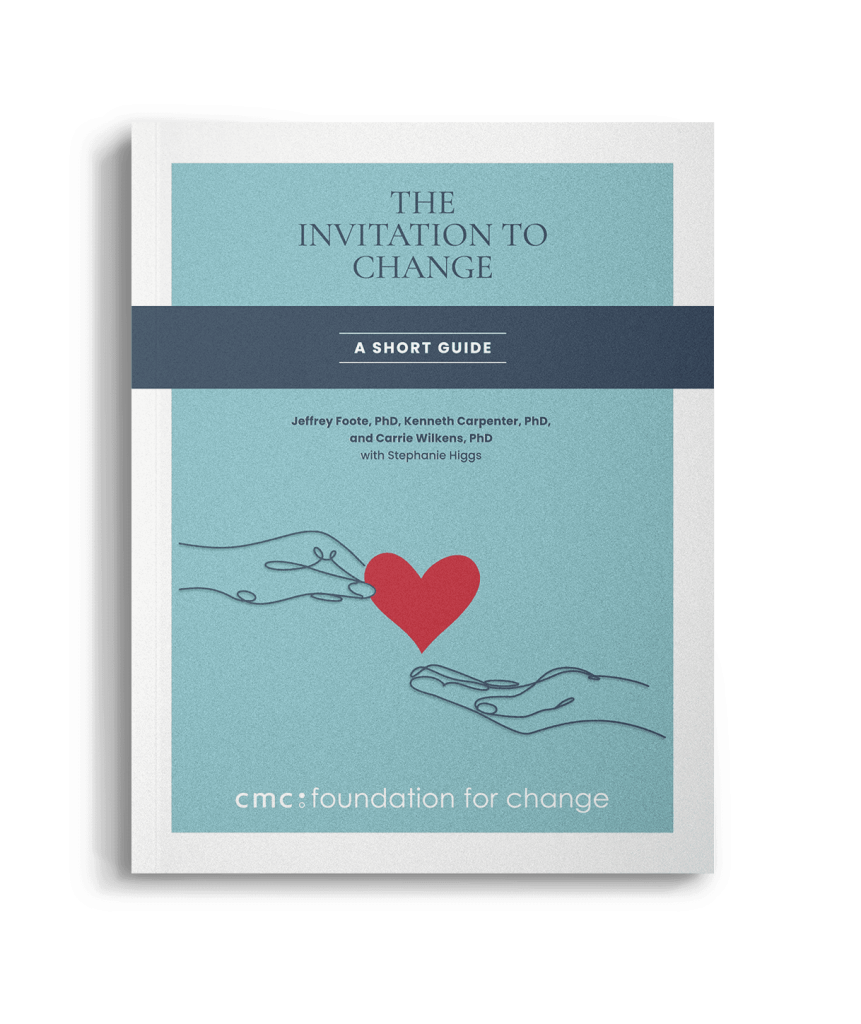 You’ve probably heard it said that love is not a noun; it’s a verb. According to an acronym that helps people remember communication skills, LOVE is four verbs: Listening, Offering, Validating, and Empathizing. You’ll hit more green lights when you communicate with LOVE.
You’ve probably heard it said that love is not a noun; it’s a verb. According to an acronym that helps people remember communication skills, LOVE is four verbs: Listening, Offering, Validating, and Empathizing. You’ll hit more green lights when you communicate with LOVE.
LISTENING
There are many ways to listen to another person, some more helpful than others. A powerful therapeutic approach called Motivational Interviewing emphasizes four strategies: open-ended questioning, affirming, reflecting or active listening, and summarizing. It’s an approach to listening that helps the red lights turn green, instead of driving straight through and hoping for the best.
1. Open-ended questions – These are questions that call for some elaboration, that can’t be answered with one word (e.g. “What concerns you most?” “What would you like to be different?”). Open questions invite description, giving you, the listener, more to listen to and learn from. They also set a collaborative tone, as they communicate more interest in your child’s view. Open-ended questions should be inviting information (from them), not suggesting information (from you).
| Closed question | Open-ended question |
| “Are you mad at your teacher for calling us?” | “What is your reaction to your teacher calling us?” |
| “Do you think you shouldn’t have a curfew?” | “What about this curfew do you think isn’t fair?” |
2. Affirmations – Listen for the positives. Communication can easily become all about what’s wrong. Noticing what’s going right and explicitly acknowledging it can change everything: it puts some balance back in the conversation, holds a positive connection, and keeps you headed for green lights. How? Affirming statements reduce defensiveness, which helps when you get to tougher issues (what’s not going so well). They also build self-esteem and reinforce positive behaviors. Affirmations are not cheerleading, which is more general; they refer to something specific. Highlighting your child’s strengths and recognizing positive behaviors will improve your relationship with your child and help her to change.
For example, you can:
- Acknowledge effort: “You’re really showing some commitment to getting home on time.”
- State your appreciation: “I appreciate your openness and honesty today.”
- Catch the person doing something right: “Thanks for helping your brother.”
- Give a compliment: “I like the way you said that. You really have a way with people.”
- Express hope, caring, or support: “I hope this weekend goes well for you!”
3. Reflections – Also called active listening, reflections involve restating some or all of what you think the person talking to you said. Your reflection can simply restate the words you heard, or it may reflect the feeling in the words; it can even infer meaning, as long as you are open to maybe getting it wrong! Reflections are statements, not questions (which can slow down or redirect the other person).
As well as communicating that you understand what your child is saying, reflections make sure you actually do understand what she is saying—or, if you get it wrong, that you are trying. Reflecting is not necessarily agreeing, but it is being willing to hear how your child sees things, instead of immediately countering. Reflective listening helps a discussion go forward, even or especially after you’ve hit a red light.
4. Summaries – With open questions, affirmations, and reflections, you may end up in a long and productive conversation! Summarizing communicates that you were listening, and helps pull together the important things that were said. It also helps your child to organize her thoughts more coherently if they were jumbled, if you can tie them together in a logical way, and can lead her to connect certain dots. Summaries can even guide the conversation toward a next step, without forcing an agenda. Like reflections, summaries should come with permission for your child to disagree with or correct the record as you recount it. Try to summarize as accurately as possible, without editing the conversation to include what you wished she had said.


